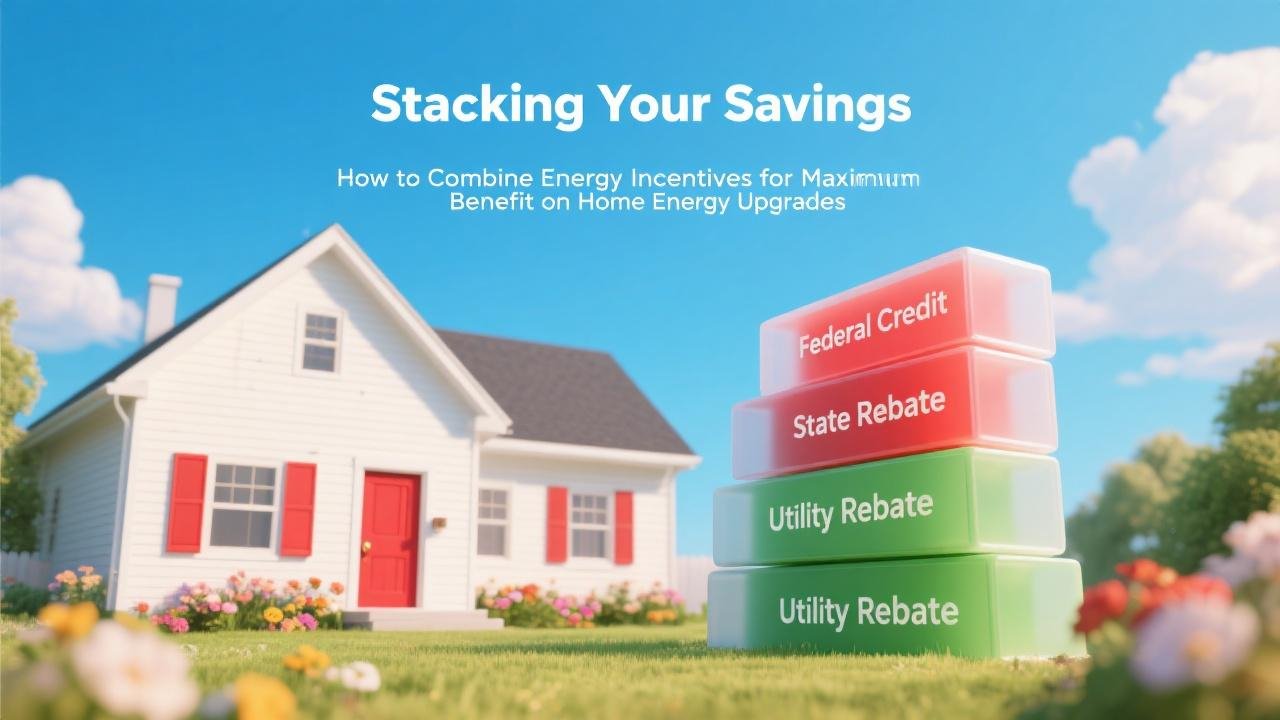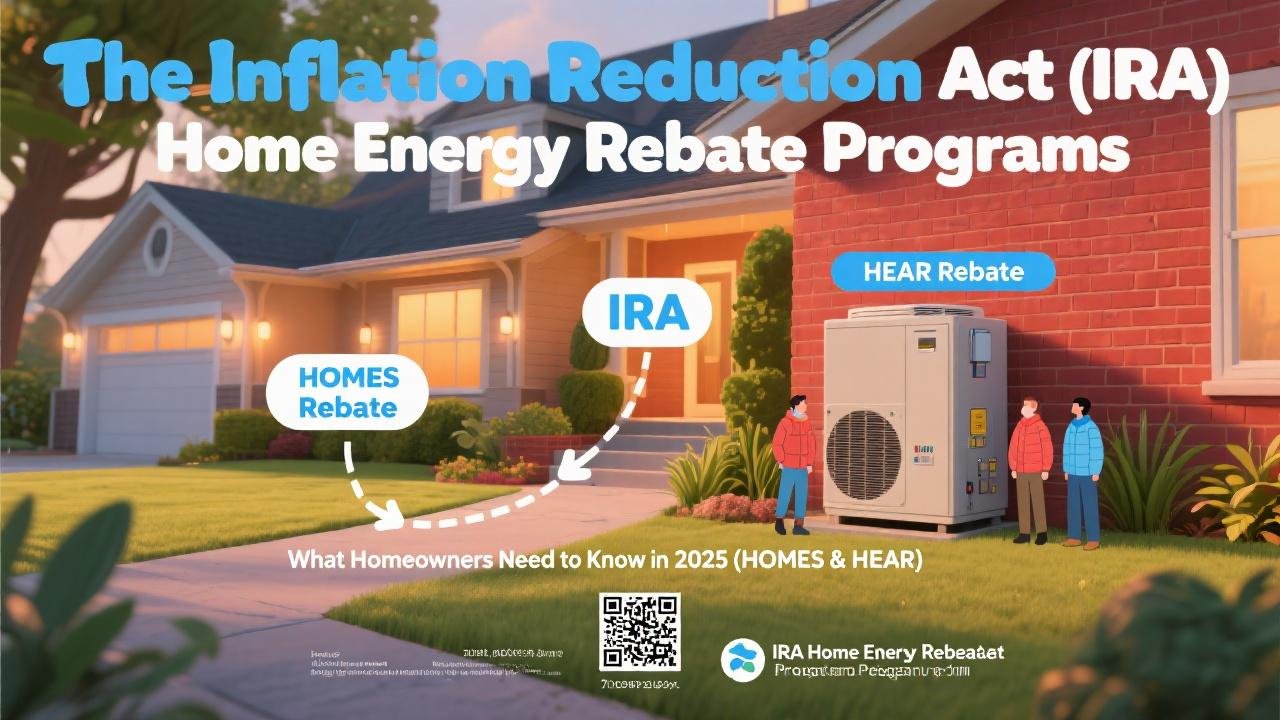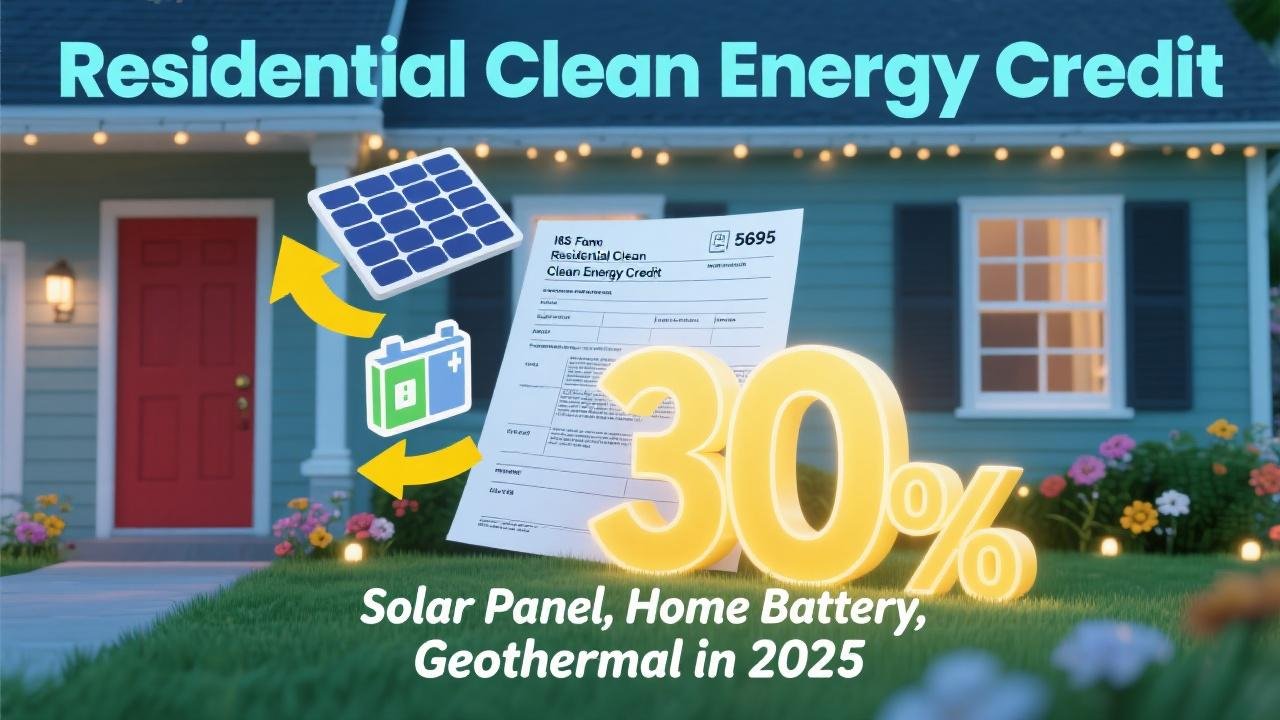Layering Incentives for a More Affordable Green Home
Making energy-efficient upgrades or installing renewable energy systems in your home is a smart financial and environmental decision. In 2025, a wealth of incentives – from federal tax credits and new federal rebate programs to state initiatives and local utility offers – can significantly reduce the cost of these projects. The key to maximizing your savings often lies in “stacking” these incentives, or strategically combining multiple programs to cover a larger portion of your project costs. This guide will explore how homeowners in 2025 can navigate and combine various energy incentives for the greatest financial benefit.
Understanding the Landscape of Energy Incentives:
Before you can stack incentives, it’s important to know the different types available:
- Federal Tax Credits:
- Residential Clean Energy Credit: 30% for solar, battery storage, geothermal (no cap for most).
- Energy Efficient Home Improvement Credit: 30% for insulation, windows, doors, HVAC, electrical panel upgrades, home energy audits, with annual limits per item and an overall annual cap of $3,200.
- Federal Rebate Programs (State-Administered under IRA):
- Home Efficiency Rebates (HOMES): Performance-based rebates for whole-home energy savings, available to all income levels, with enhanced amounts for LMI households.
- Home Electrification and Appliance Rebates (HEAR): Point-of-sale rebates for LMI households for specific high-efficiency electric appliances and upgrades.
- State Incentives:
- Can include state tax credits/deductions, direct rebates, property tax exemptions, sales tax exemptions, and low-interest loan programs. Varies significantly by state. (Example: NY offers state tax credits and rebates for solar and heat pumps ).
- Local Utility Rebates:
- Offered by your electric or gas utility company for specific energy-efficient equipment (e.g., smart thermostats, heat pumps, appliances) or participation in demand response programs.
- Manufacturer Rebates:
- Sometimes manufacturers of HVAC equipment, windows, or appliances offer their own rebates.
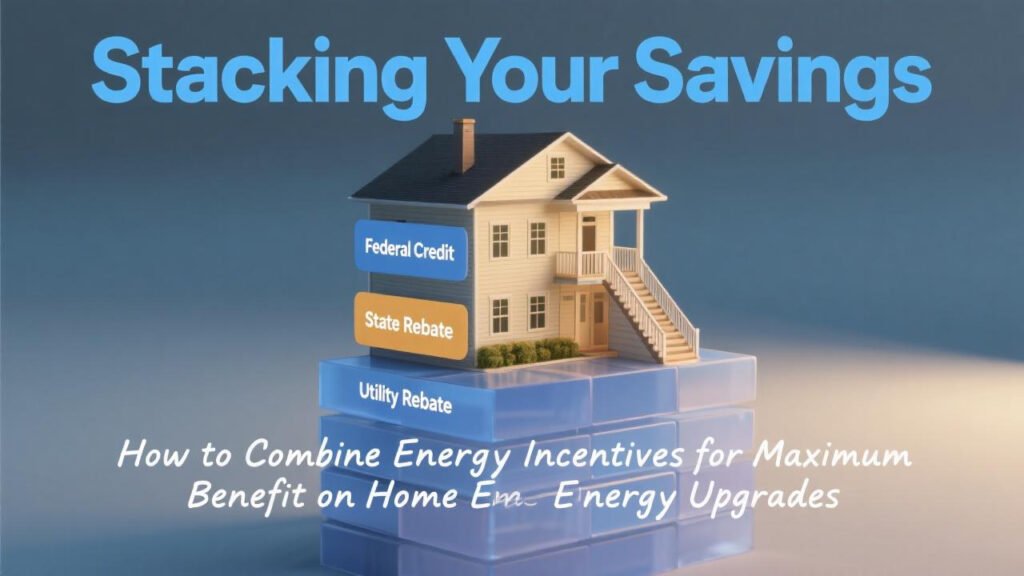
The Art of Stacking: How Incentives Can Work Together
The general principle of stacking is to apply for and receive benefits from as many eligible programs as possible for a single project. Here’s how it often works:
- Federal Tax Credits + State/Local Rebates: This is a common and powerful combination. For example, you could install a qualifying air-source heat pump and potentially receive:
- Up to a $2,000 federal tax credit (Energy Efficient Home Improvement Credit).
- A state rebate (e.g., $500 – $1,500 from your state energy office or utility).
- This significantly reduces your net cost.
- Federal IRA Rebates (HOMES/HEAR) + Federal Tax Credits:
- The DOE has indicated that, in many cases, homeowners may be able to combine benefits from the HEAR or HOMES rebate programs with federal energy tax credits for the same project. For example, an LMI household might receive an $8,000 HEAR rebate for a heat pump and still be eligible to claim the $2,000 Energy Efficient Home Improvement tax credit on any remaining out-of-pocket costs (if the rebate doesn’t cover 100% of the project).
- Important Note: The exact interaction rules can be complex. Generally, if a rebate is considered a reduction in the purchase price of the equipment, it will reduce the cost basis on which your tax credit is calculated. However, if the rebate is taxable income (less common for direct consumer rebates), it might not reduce the credit basis. Always check the specific guidance for each program.
- State Rebates + Utility Rebates: Often, you can combine a rebate from your state energy office with one from your local utility for the same piece of equipment.
Example Scenario for Stacking Incentives in 2025:
Imagine a moderate-income homeowner (eligible for 50% HEAR coverage) installing a new ENERGY STAR Most Efficient heat pump that costs $10,000 (including installation).
- HEAR Rebate: If their state’s HEAR program is active and they qualify, they could receive a rebate of up to $8,000, but capped at 50% of the project cost for moderate-income. So, they might get a $5,000 HEAR rebate.
- Remaining Out-of-Pocket Cost: $10,000 – $5,000 = $5,000
- Federal Energy Efficient Home Improvement Credit: They can then claim 30% of their remaining eligible out-of-pocket expenses for the heat pump, up to the $2,000 annual limit for heat pumps.
- Tax Credit: 30% of $5,000 = $1,500 (since this is less than the $2,000 cap).
- State or Utility Rebate: Let’s say their state or utility offers an additional $500 rebate for qualifying heat pumps.
- This might further reduce their out-of-pocket cost, or its interaction with the federal tax credit basis would need to be checked.
Net Result: The initial $10,000 cost could potentially be reduced by $5,000 (HEAR) + $1,500 (Federal Tax Credit) + $500 (State/Utility Rebate) = $7,000 in incentives, bringing the net cost down to $3,000. (This is illustrative; actual amounts and interactions depend on specific program rules).
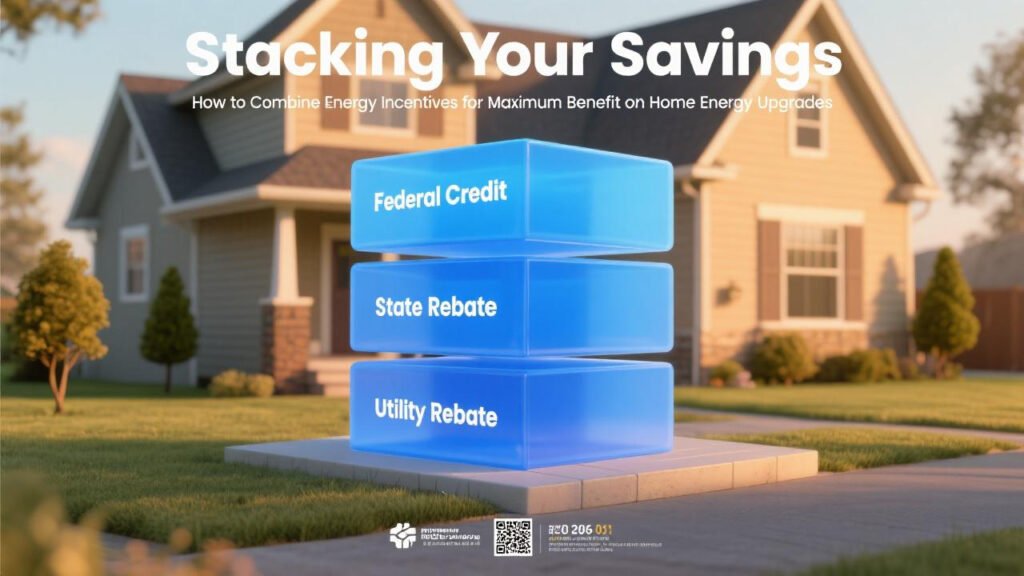
Key Strategies for Maximizing Your Stacked Savings:
- Comprehensive Research is Essential:
- Start with the DSIRE database (dsireusa.org) to find all federal, state, local, and utility incentives available in your area for your planned project(s).
- Check the ENERGY STAR website for their rebate finder and information on qualifying products.
- Visit your State Energy Office website and your local utility’s website for program details and applications.
- Understand Eligibility for Each Program:
- Pay close attention to income requirements (especially for HEAR and enhanced HOMES rebates), equipment efficiency standards (SEER2, HSPF2, UEF, ENERGY STAR certifications), installation requirements (e.g., certified contractors), and residency status.
- Prioritize High-Impact Upgrades: Focus on upgrades that offer the best energy savings and qualify for multiple incentives (e.g., heat pumps, insulation, solar + battery). A home energy audit can help identify these.
- Timing Matters:
- Program Deadlines & Funding: Many rebate programs have limited funding or specific application windows. Apply as early as possible.
- Tax Credit Installation Dates: Federal tax credits are generally claimed for the year the equipment is “placed in service” (installed).
- IRA Rebate Reservations: For programs like HEAR, you may need to reserve your rebate before purchasing or installing equipment.
- Work with Knowledgeable Contractors:
- Choose installers (HVAC, solar, insulation) who are familiar with local and federal incentive programs. They can often help with paperwork and ensure installations meet eligibility requirements.
- Keep Meticulous Records:
- Save all invoices, receipts, manufacturer certifications (e.g., AHRI certificates, ENERGY STAR labels), photos, and completed application forms for every incentive. This is crucial for tax purposes and rebate processing.
- Consult a Tax Professional:
- The interaction of various incentives, especially how rebates affect the cost basis for tax credits, can be complex. A tax advisor can help you navigate the rules and maximize your claims.
Potential Limitations:
- “Double-Dipping” Rules: Some programs may explicitly prohibit combining their benefits with certain other incentives for the exact same dollar of an expense. Always read the fine print.
- Rebates Reducing Tax Credit Basis: As mentioned, if a rebate is considered a direct reduction of your purchase price, it will lower the amount on which your federal tax credit is calculated.
Strategic Planning for Maximum Affordability
Stacking energy incentives in 2025 is a powerful strategy for homeowners to make significant energy efficiency and renewable energy upgrades more affordable. By thoroughly researching federal, state, local, and utility programs, understanding eligibility requirements, and carefully planning your projects, you can often combine multiple financial benefits. This layered approach not only reduces your upfront costs but also accelerates your journey towards a more comfortable, sustainable, and cost-effective home. Don’t leave money on the table – explore all available incentives before starting your next home energy project.

